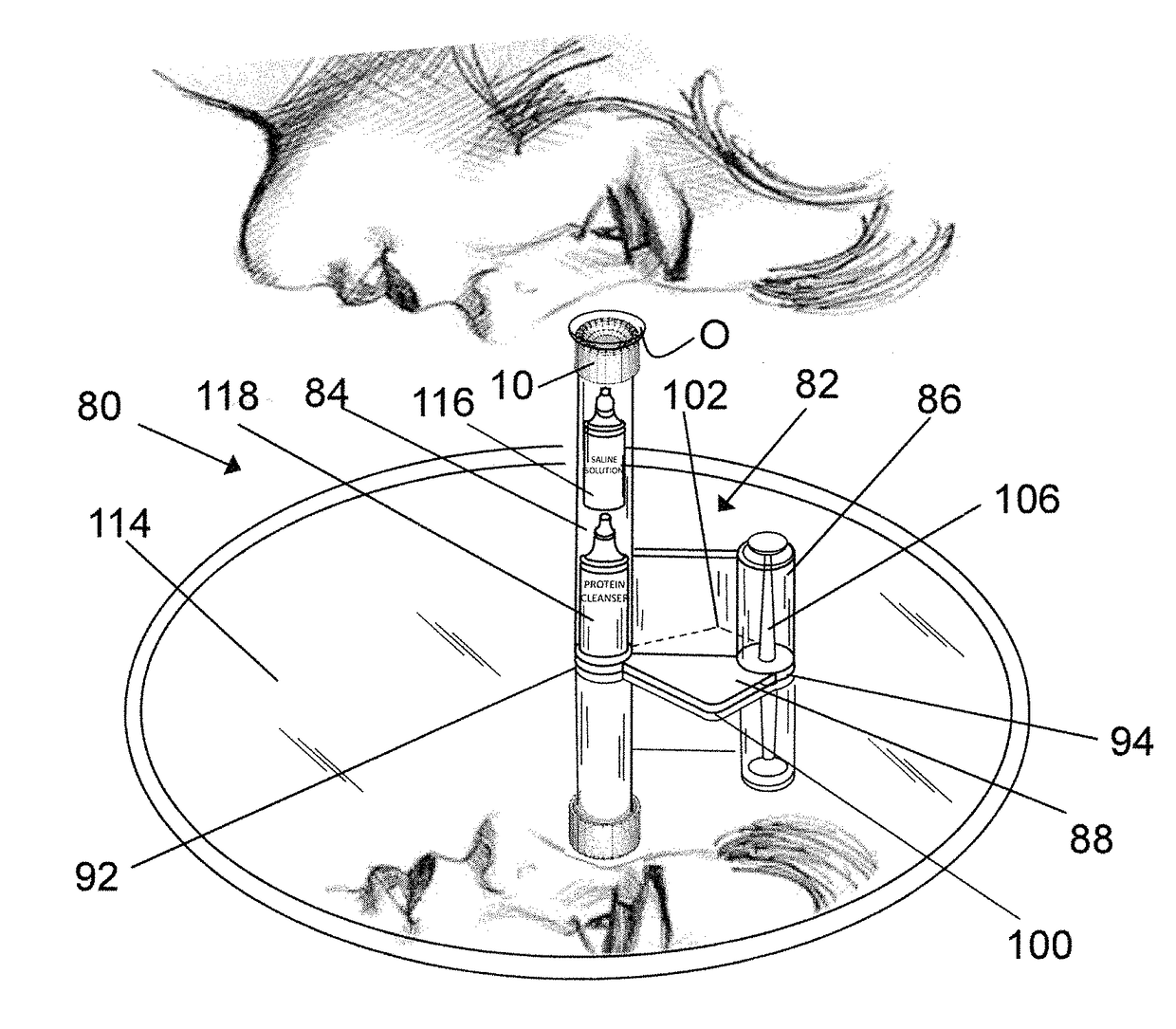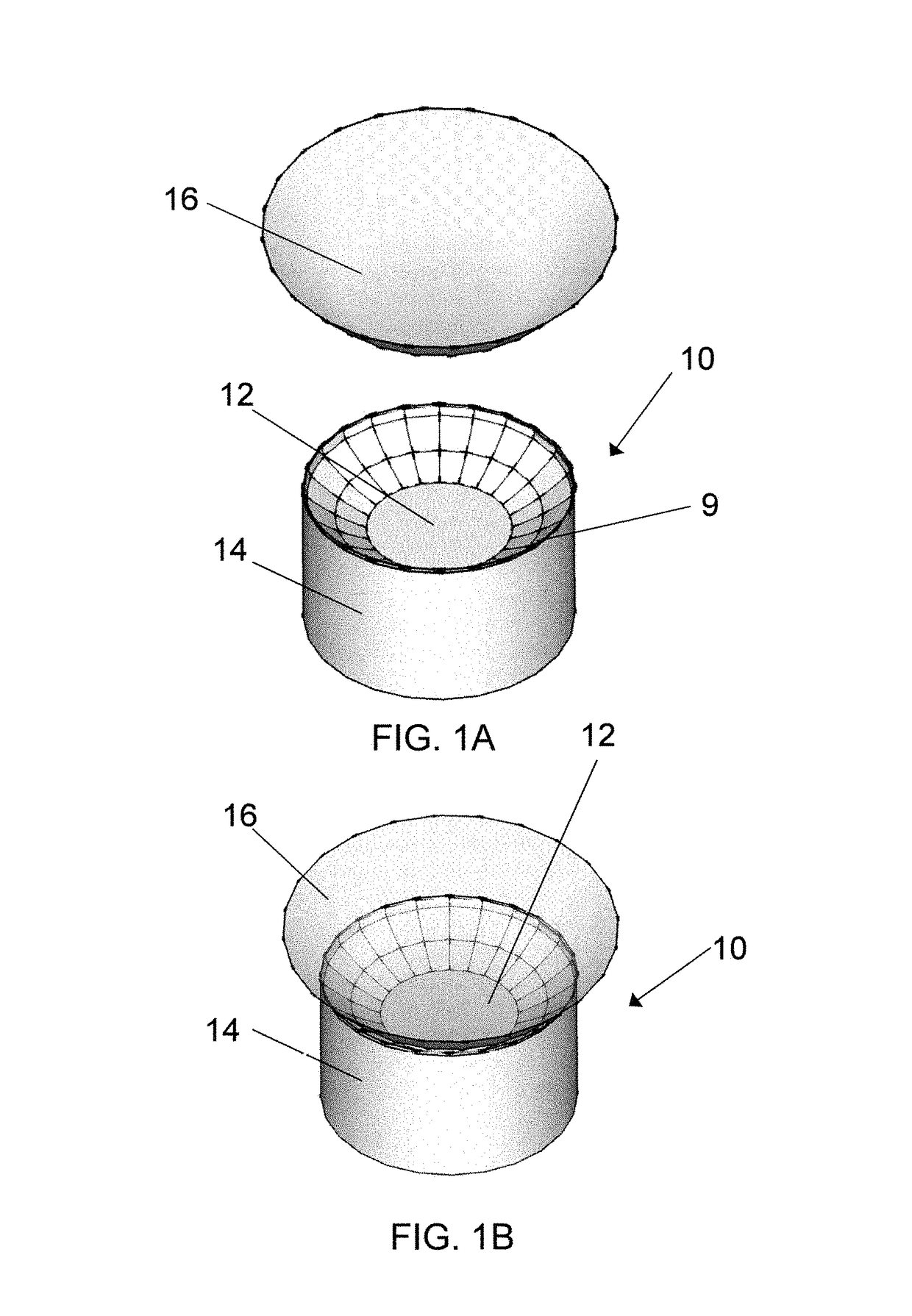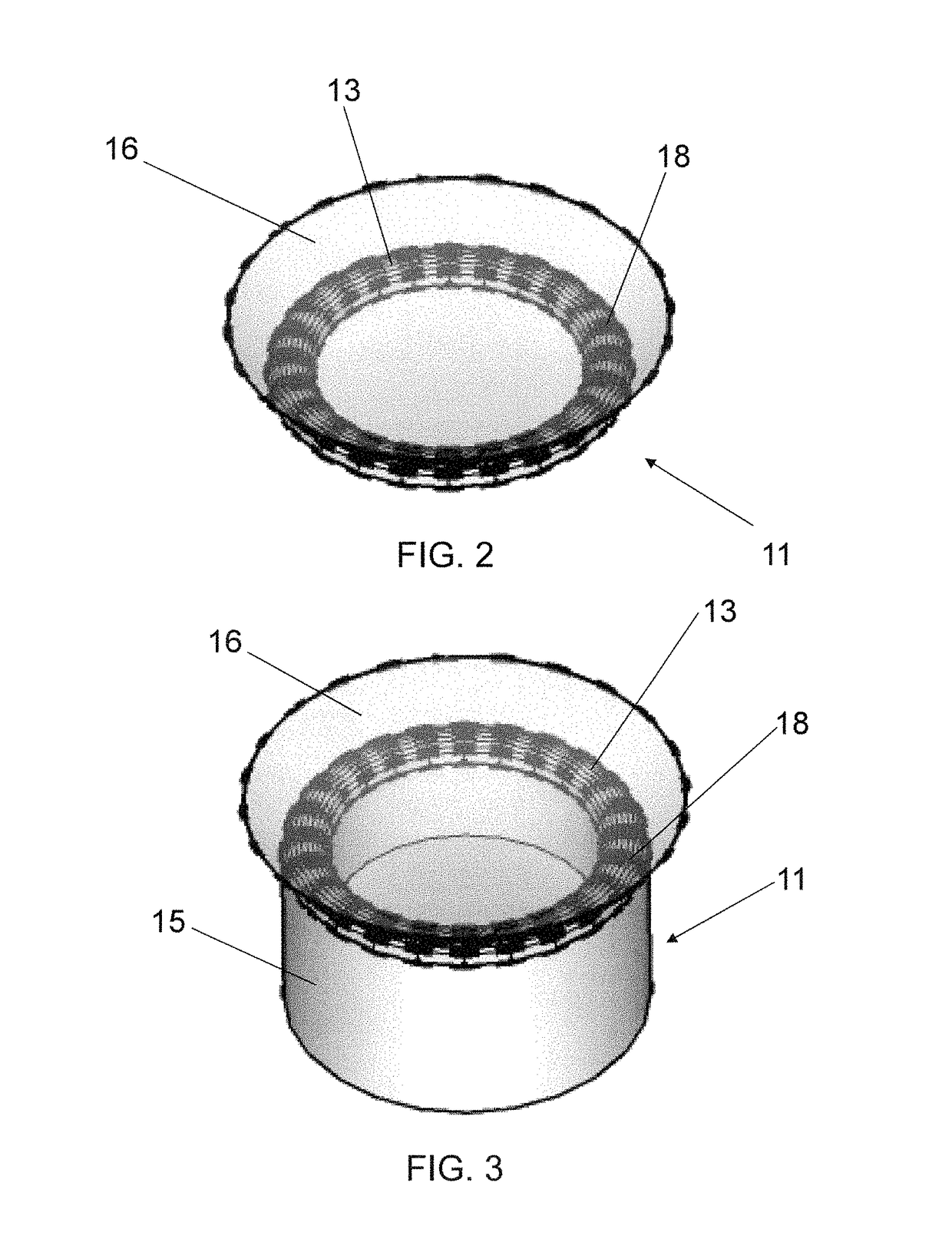Lens aid and lens aid system and techniques for the insertion and removal of contact and scleral lenses
a technology of lens cup and lens cup, which is applied in the field of lens cup, can solve the problems of adversely affecting the vision of the wearer, insufficient improvement of vision, irritation and complications, etc., and achieve the effects of reducing the chances of suction, safe hands-free insertion, and easy removal from the lens cup
- Summary
- Abstract
- Description
- Claims
- Application Information
AI Technical Summary
Benefits of technology
Problems solved by technology
Method used
Image
Examples
Embodiment Construction
[0098]An embodiment of a lens cup 10 of the present invention is shown in FIG. 1A. Embodiments of the lens cup 10 have an upper surface 12 and a cylindrical body 14. The upper surface 12 is formed with parabolic curved walls and a center portion providing for a large diameter scleral or contact lens 16 to be placed and supported along the edge 9 of the upper surface 12 as shown in FIG. 1B. The lens cup 10 is made from antibacterial, antimicrobial material such as a medical grade polypropylene, a soft pliable plastic silicone, closed cell foam, or rubber like material with soft near forty (40) durometer qualities or another type of material that will compress and allow its form to be altered easily as the lens 16 sitting on top is brought against the eye. This edge flexibility feature is to allow and provide for the absolute correct precision and final alignment of the axis of the lens 16 at the immediate point where the lens 16 initially makes contact with the eye. The soft and plia...
PUM
 Login to View More
Login to View More Abstract
Description
Claims
Application Information
 Login to View More
Login to View More - R&D
- Intellectual Property
- Life Sciences
- Materials
- Tech Scout
- Unparalleled Data Quality
- Higher Quality Content
- 60% Fewer Hallucinations
Browse by: Latest US Patents, China's latest patents, Technical Efficacy Thesaurus, Application Domain, Technology Topic, Popular Technical Reports.
© 2025 PatSnap. All rights reserved.Legal|Privacy policy|Modern Slavery Act Transparency Statement|Sitemap|About US| Contact US: help@patsnap.com



